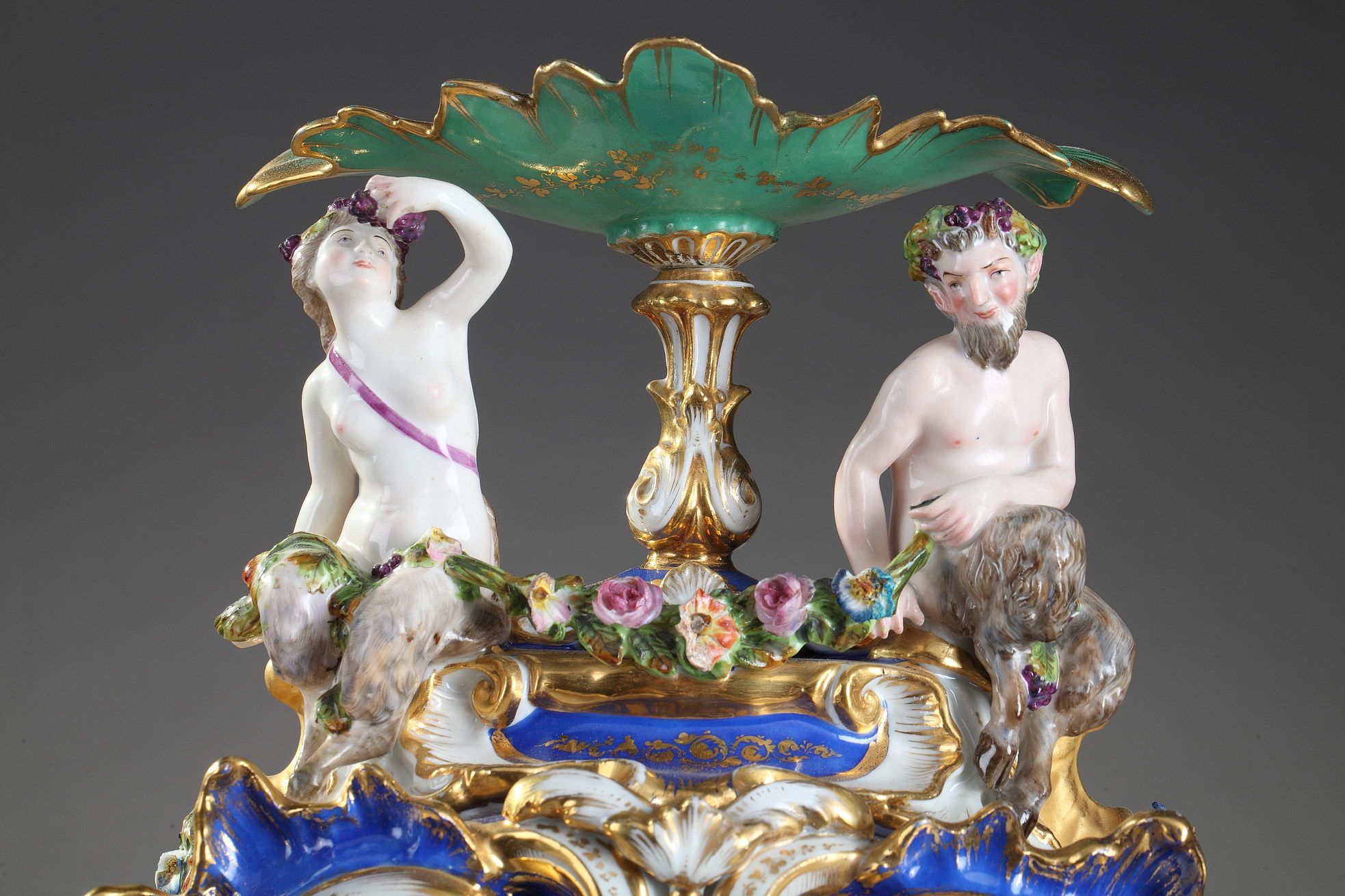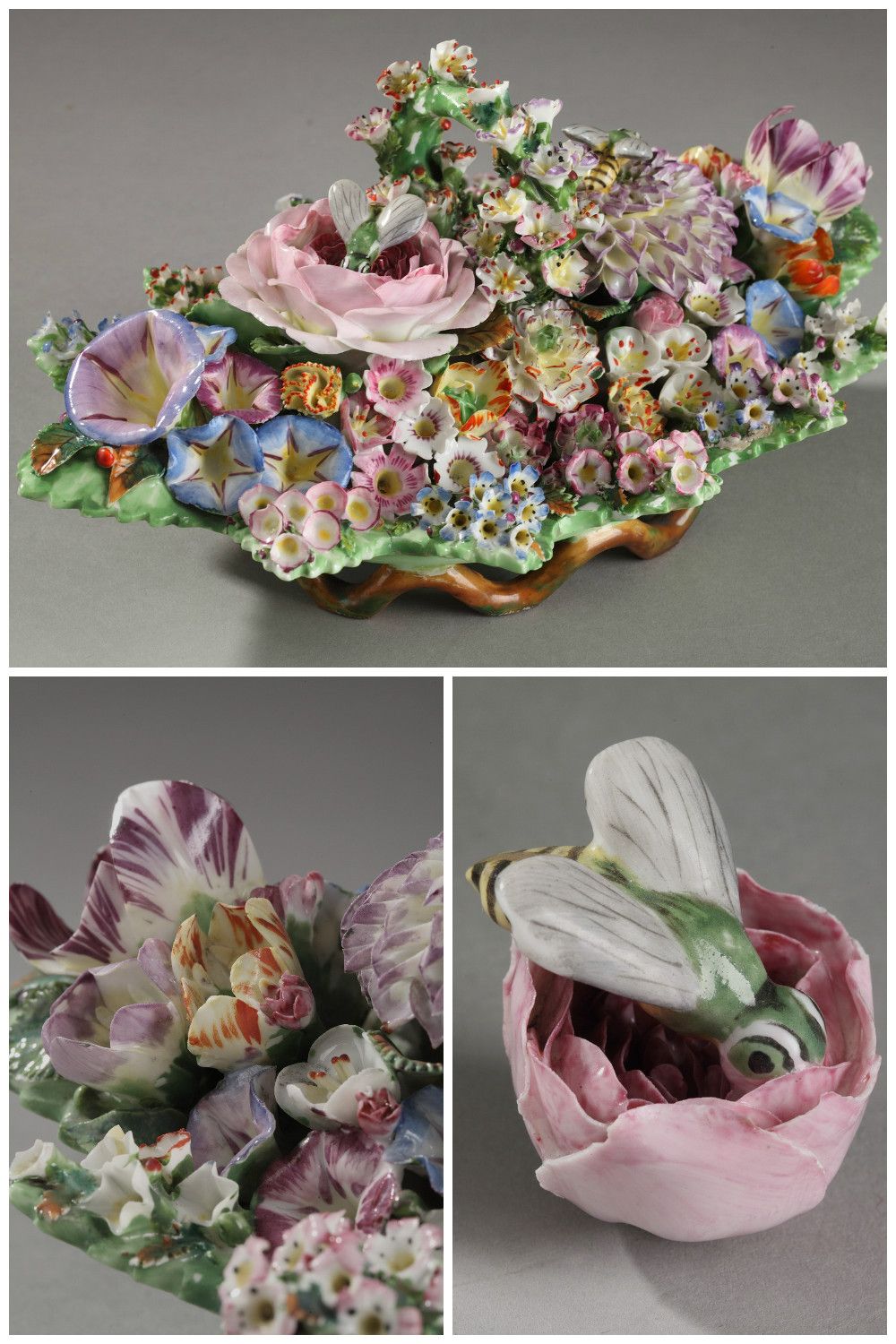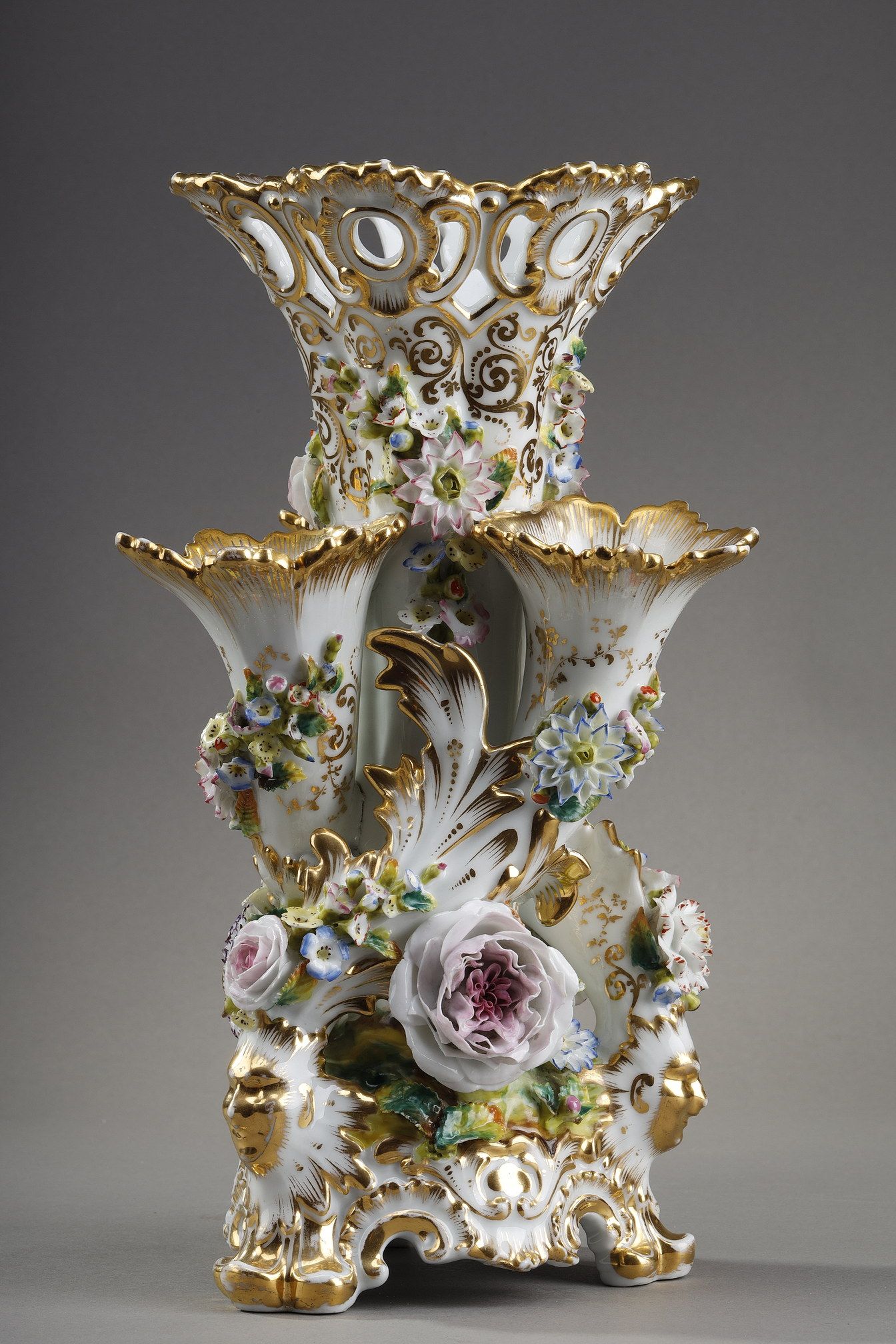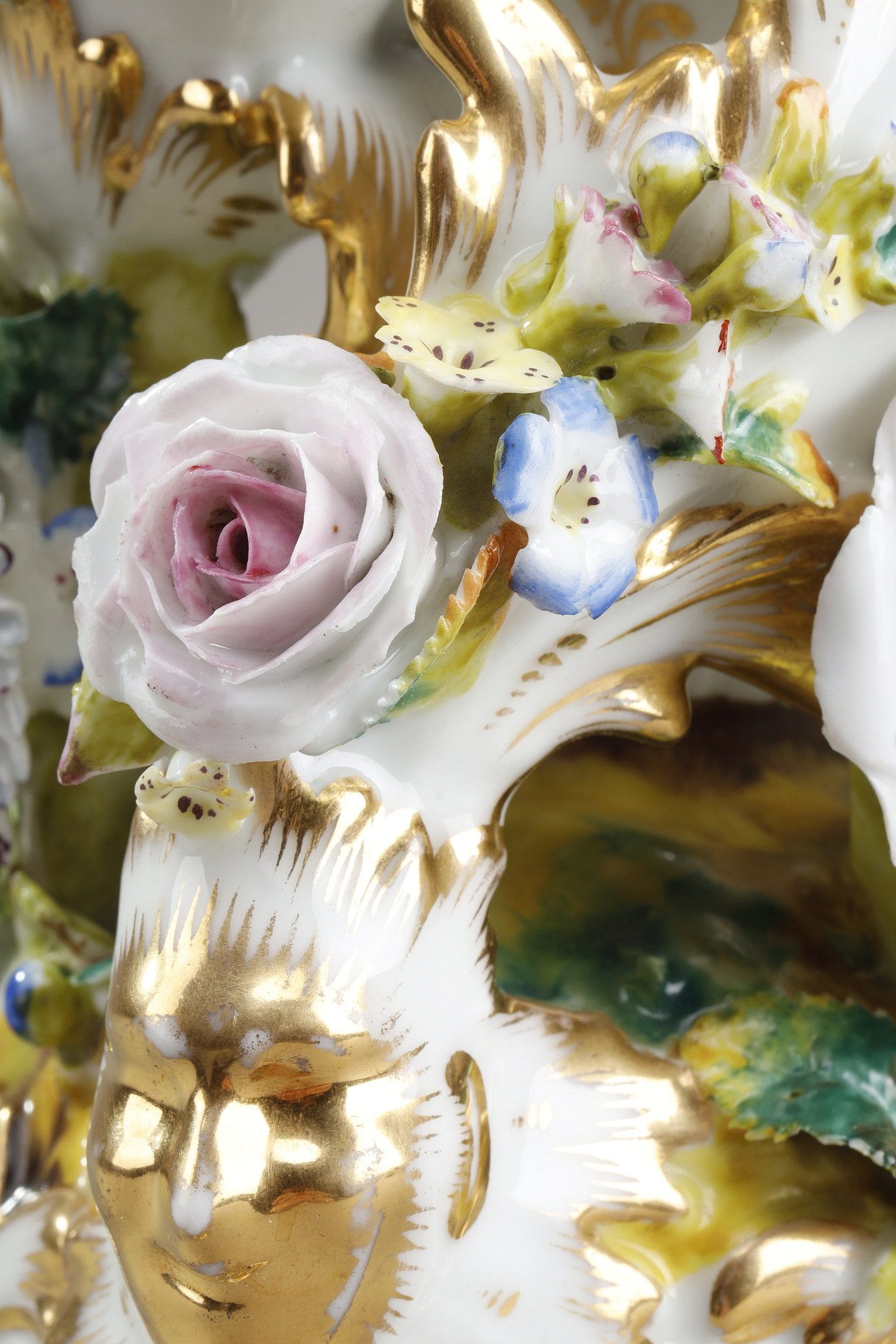Jacob Petit and Paris porcelain
22.09.12
In the 1830s, while Parisian decorators and porcelain manufacturers supplied designs that perpetuated the neoclassical vocabulary, Jacob Petit (1796-1868) challenged tradition by offering pieces in a wide variety of styles and decorations. This strikingly extravagant production, which emerged just as the art of porcelain was becoming industrialized, enjoyed considerable success and revived the trade in decorative porcelain.

Porcelain clock in the style of Jacob Petit
Born in Paris in 1796, Jacob Mardouché, known as Petit after his wife Anne Adelaïde Petit, began by studying painting in the studio of Antoine-Jean Gros. By 1820, he was described as a porcelain manufacturer, and it was probably from this date that he made numerous trips to Italy, Switzerland, and Germany, before settling for a few years in England where he studied various industries and painted theater scenery.
Upon returning to France around 1830-1831, Jacob Petit published a collection of one hundred plates on interior decoration, featuring designs for vases, furniture, silverware, and joinery, revisiting earlier styles with a preference for Antiquity and the Gothic style. After a brief stay in Sèvres, he established a small workshop in Belleville. His rise was rapid and spectacular, and in 1833 he acquired the Baruch Weil porcelain factory in Fontainebleau, whose production was admired by Louis XVIII, Charles X, and the Duchess of Berry. He also owned a decorating workshop in Paris at 26 rue de Bondy.

In 1846, he partnered with Nicolas Moriot, a painter at the Royal Sèvres Manufactory, and established a small factory in the same town for the production of soft-paste porcelain. Five years later, Jacob Petit moved his factory from Fontainebleau to Avon and sold it in 1862 to one of his associates, Etienne Jacquemin.
The Jacob Petit factory was one of the most famous of the years 1830-1860 and its production was abundant and varied. Although in its early days Jacob Petit manufactured tableware, from 1838 onwards it devoted itself exclusively to decorative pieces: bottles, clocks, perfume burners, nightlights, teapots, paperweights, vases, candlesticks and small statuettes.
From 1834 onwards, Jacob Petit presented remarkable pieces at the Exhibitions of Industrial Products, and later at the Universal Expositions, whose technical innovations earned him numerous official awards. However, the accumulation of elements from earlier styles provoked enthusiasm among connoisseurs of refined objects. His work is highly eclectic, featuring, either alone or in combination, Troubadour Gothic, Renaissance, Neoclassical, Rococo, Far Eastern (with Chinese motifs), and Near Eastern (with Arab wars and odalisques).
 Furthermore, foreign influences are also evident, stemming from Jacob Petit's travels abroad, particularly in Central Europe, where he studied a Rococo style of unparalleled exuberance in France, which he later imposed on his contemporaries. Indeed, at the height of the Romantic era, this artist with his boundless imagination brought his convoluted, asymmetrical, and "bizarre" forms to their peak, easily setting him apart from other porcelain manufacturers in Paris. Rococo motifs lavishly decorate corners, edges, and even flat surfaces. The dynamic forms, the more or less pronounced reliefs, sometimes reaching high relief, combined with leafy branches, birds, flames, flowers, and fruit, create a luxuriant decoration that contrasts sharply with the sobriety inspired by antiquity. Colored or gilded, all these forms lend the pieces the air of opulence so prized at the time. Clocks are particularly representative of this taste, recalling, through the abundance of rocaille motifs and scrolls, the tormented rococo from across the Rhine.
Furthermore, foreign influences are also evident, stemming from Jacob Petit's travels abroad, particularly in Central Europe, where he studied a Rococo style of unparalleled exuberance in France, which he later imposed on his contemporaries. Indeed, at the height of the Romantic era, this artist with his boundless imagination brought his convoluted, asymmetrical, and "bizarre" forms to their peak, easily setting him apart from other porcelain manufacturers in Paris. Rococo motifs lavishly decorate corners, edges, and even flat surfaces. The dynamic forms, the more or less pronounced reliefs, sometimes reaching high relief, combined with leafy branches, birds, flames, flowers, and fruit, create a luxuriant decoration that contrasts sharply with the sobriety inspired by antiquity. Colored or gilded, all these forms lend the pieces the air of opulence so prized at the time. Clocks are particularly representative of this taste, recalling, through the abundance of rocaille motifs and scrolls, the tormented rococo from across the Rhine.

Polychrome porcelain vase by Jacob Petit
One of Jacob Petit's successes was the "snowball" vases, the glory of Meissen in the years 1730-1750. Completely covered with tiny white flowers in relief, executed with meticulous care, this decoration became for Jacob Petit the object of true outpourings of fantasy.
Deeply influenced by Saxon porcelain, Jacob Petit also produced numerous statuettes and trinkets in shimmering colours representing characters from the court of Louis XV or Saxony, musicians, shepherds and shepherdesses, orientals or even animals.
These small figurines have a decorative or utilitarian function, ingeniously concealing bottles, nightlights, inkwells, paperweights, bouquet holders or match holders.
For the painted decorations on his porcelain, Jacob Petit used bright, luminous colors reminiscent of 18th-century palettes. The pieces decorated in his workshops possess a remarkable freshness; the black, acid green, amaranth, or turquoise backgrounds highlight the polychromy of the raised flowers or the lively scenes of figures from various countries and eras. The vibrancy of the colors is further enhanced by the exuberance of the gold leaf.
Jacob Petit porcelain greyhound. The successful models invented by Jacob Petit were frequently imitated. Indeed, he sold many "blanks" to decorators and merchants in France as well as abroad.

After two centuries, the work of this porcelain maker with a prolific personality appears as a production strongly imbued with Romanticism with the triumph of imagination, feeling, fantasy and "the exotic through time" according to the phrase of Théophile Gautier quoted in the Journal des Goncourt.
Drawing inspiration from everything he admired during his travels and skillfully blending earlier styles, he nevertheless created a highly personal and instantly recognizable body of work. By contrasting with classical simplicity, Jacob Petit transformed his exuberance into an image of precious, readily accessible splendor, appealing to the tastes of a new bourgeois clientele eager to decorate their homes with striking pieces.
Bibliography:
Plinval de Guillebon, Régine de, “Jacob Petit, the most romantic of Parisian porcelain makers”, L’Estampille/L’Objet d’art, no 311, March 1997, pp. 48-57.
Idem, “The porcelains of Jacob Petit”, Plaisirs de France, no 365, March 1969, pp. 3-7.
Idem, Faiences et porcelaines de Paris, XVIIIe et XIXe siècles, Dijon, Editions Faton, 1995, pp. 286, 376.
Plinval-Salagues, Régine de, “The exoticism of Jacob Petit”, Art de France, no 3, 1963, pp. 195-200.
Boisgibault, Françoise, “Meissen and small French statuary”, L’Estampille/L’Objet d’art, no 369, May 2002, pp. 72-82.

